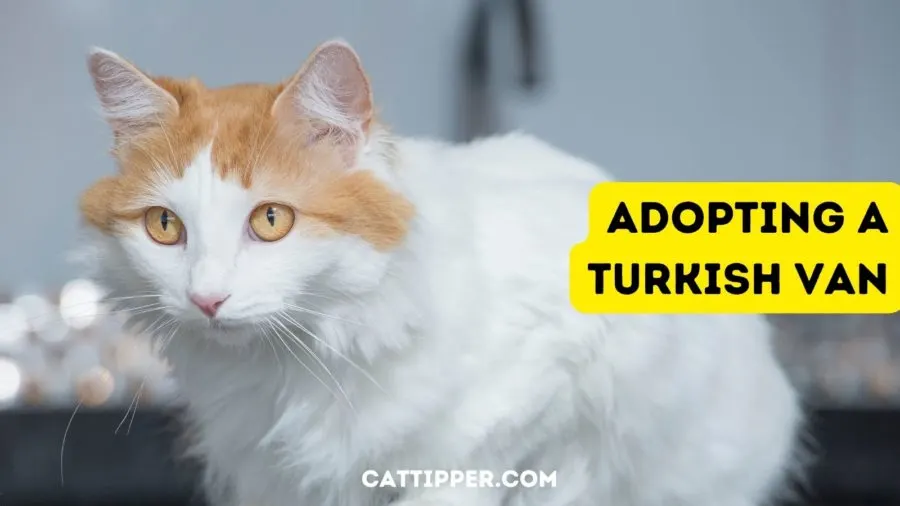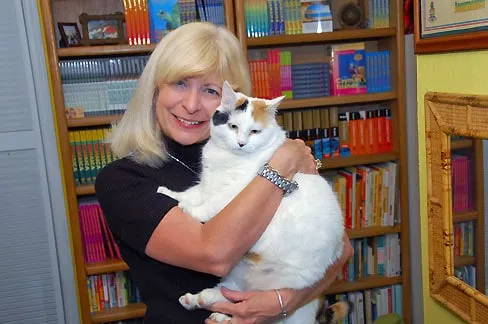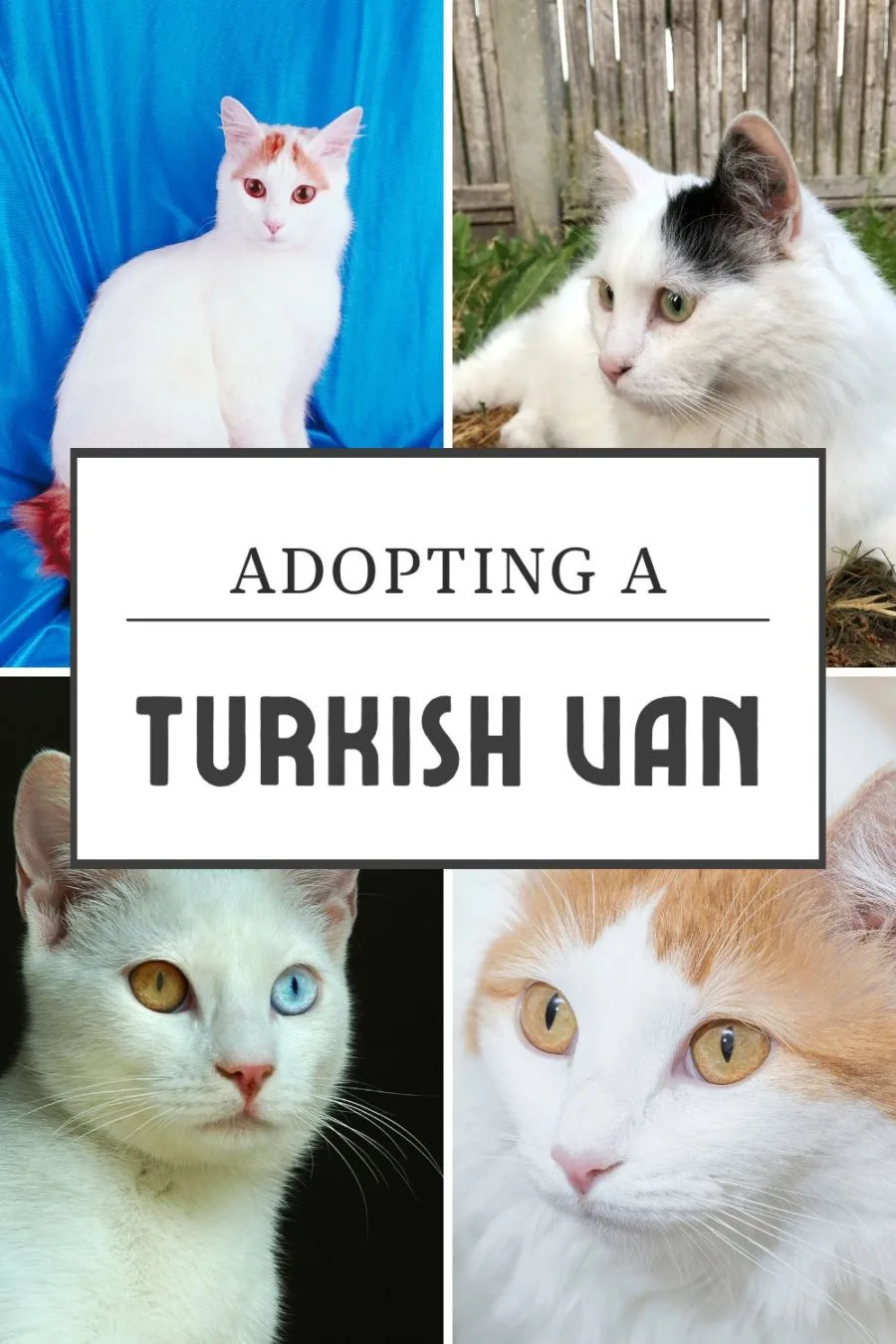Many travelers long to bring home a souvenir from a memorable vacation—but in 1955 two British women traveling in Turkey brought home some local kittens. These cats went on to be the foundation cats for the Turkish Van cat breed. The women imported two more Van cats a few years later and within a decade the breed was competing in UK cat shows.
If you are looking for a charismatic cat to share your life with, read on to learn more about the Turkish Van, a breed that left paw prints on our hearts!

How Do I Identify My Turkish Van?
Think you might have a Turkish Van?
The Turkish Van is is distinct for its “Van” pattern with color on the head and tail but no more than two spots of color on the rest of the body.
The tail is bushy and full.
Turkish Van: The Swimming Cat
But it’s not just the cats’ appearance that makes it easy to tell if you have a Turkish Van. One of the truest signs of the Turkish Van bloodline is the breed’s love of water.
While most cats might shy away from a dip, Turkish Vans actually seek out water. Besides a playful splash in the pet fountain, a Turkish Van is also happy to take a swim in the bathtub, so much so that they’ve earned the nickname “the swimming cat.”
Why do Turkish Vans like to swim when most cats would rather do anything other than get in the water? It’s thought that the semi-longhaired cats–which needed that long fur for the cold winters at Lake Van–learned to enjoy swimming in the lake to cool off during the warm summers.
Besides swimming, Vans also enjoy other active pursuits, engaging in busy play sessions with their families.
Don’t expect a snuggly lap cat; most Vans do not want to cuddle and they dislike being carried. However, they do enjoy the company of their humans and will gladly follow them around the house.
How Did the Turkish Van Get Its Name?
These beautiful cats were named for the Lake Van region of Turkey.
The Turkish Van is not to be confused with the Turkish Angora, a smaller cat with a wider variety of colors.
Although the Turkish Van can be seen at cat shows (the Cat Fanciers Association began showing this large cat in 1994), many adoptable Turkish Vans can also be found in shelters and rescues.

One of our previous cats, Coco, was found as a homeless kitten outside the post office and was our first experience with a Turkish Van.
The Turkish Van is generally considered to be a healthy breed of cat, with no major health concerns. The average lifespan of a Turkish Van is 12-15 years, though some cats have been known to live into their 20s.
Staying Fit
In spite of all that activity, though, this breed is prone to being overweight.
The cats are naturally large—up to 16 pounds for males and 14 for females—but can become overweight without the right motivation to get up and stay active.
After adoption, keep these food-motivated cats active with simple tricks such as putting the food bowl upstairs or on a raised platform that requires a bit of exercise to access.
Interactive toys that challenge your Turkish Van to think and work for that food are also a big hit with many.
And don’t forget about that propensity to swim: some Turkish Van owners regularly encourage their cats to swim in a room-temperature bath.
Finding a Turkish Van
The Turkish Van is a relatively rare breed of cat, and as such, can be quite expensive. Prices for a Turkish Van kitten can range from $800 to $1,500.
We always suggest checking with shelters and rescues, however!
Although this is not the most common breed, a surprising number of adoptable Vans await forever homes. Check Adopt-a-Pet, Petfinder and even Turkish Van breed rescues for Turkish Vans and Turkish Van mixes in your area.
Pin it to remember Adopting a Turkish Van!

- 🎉 GIVEAWAY: Lord of the Pets Portrait of Your Cat! - November 26, 2024
- Review: Lord of the Pets Cat Portraits! - November 26, 2024
- Cat Adoption: FAQ You Might Have - June 28, 2024
